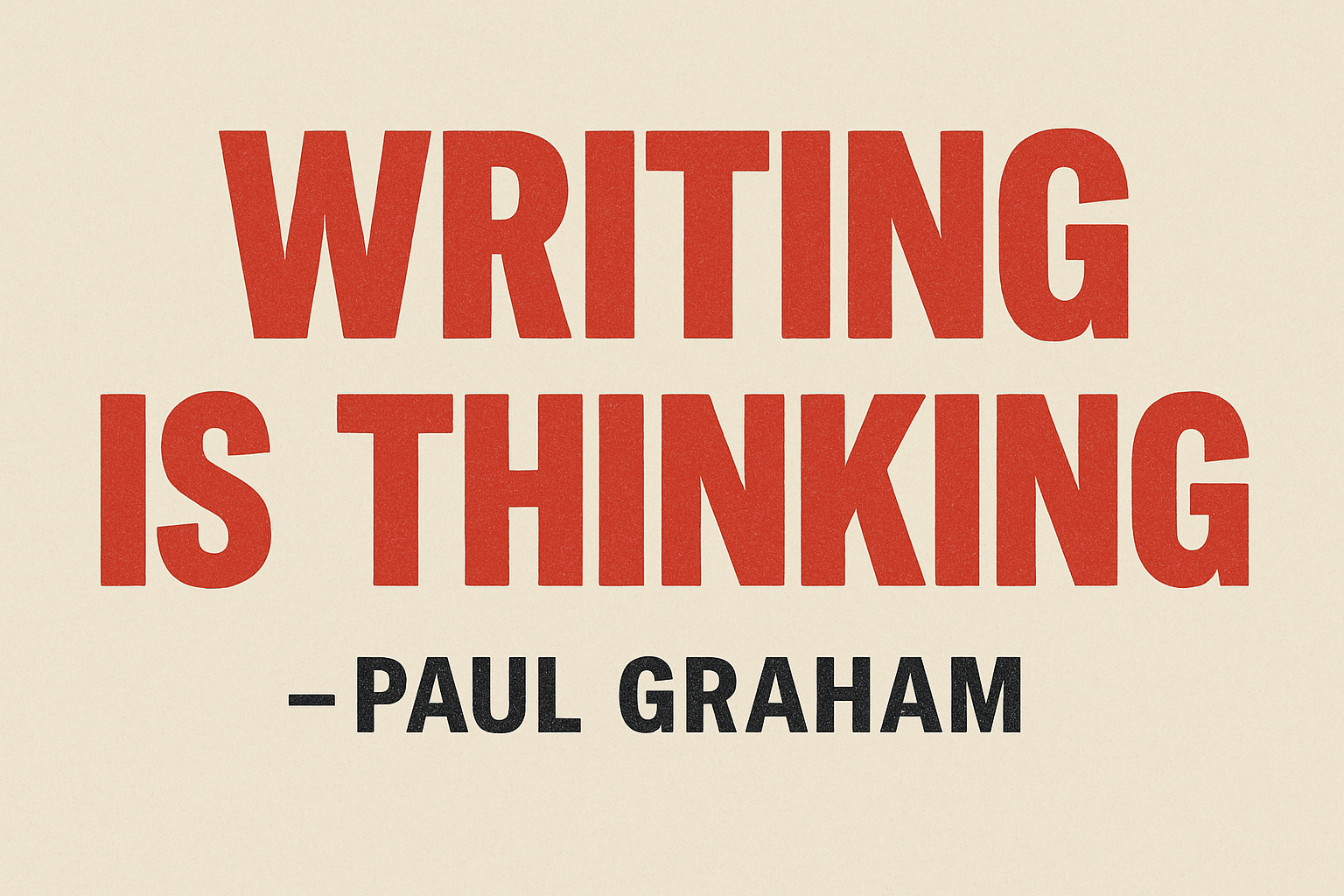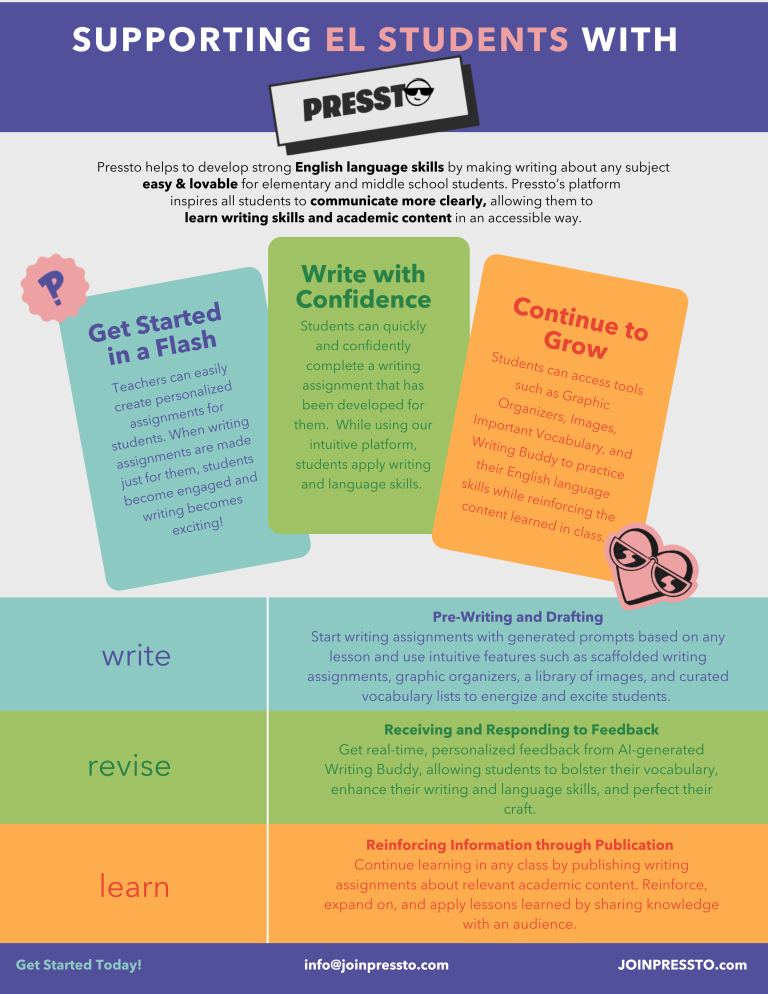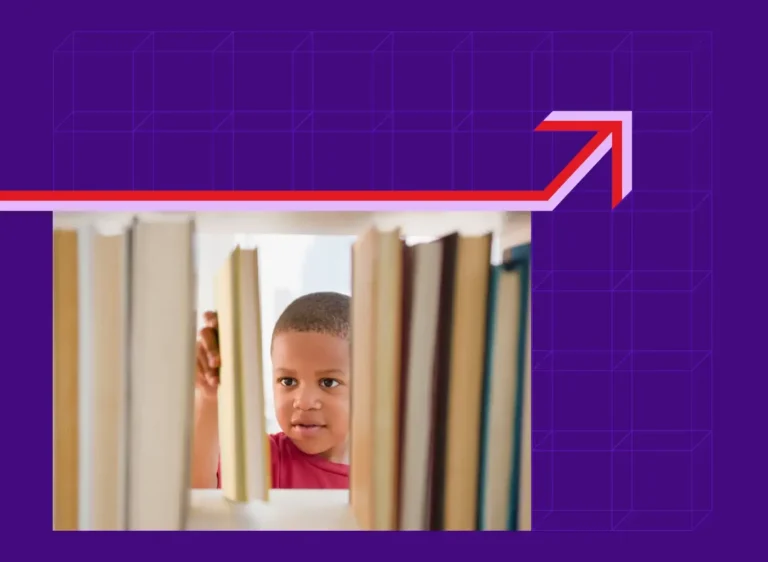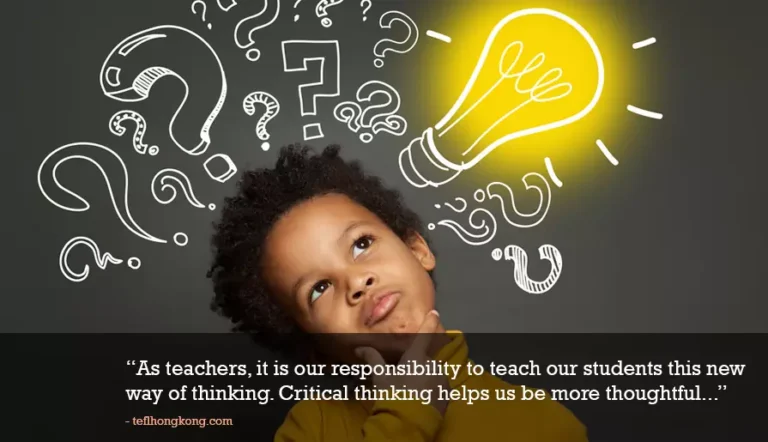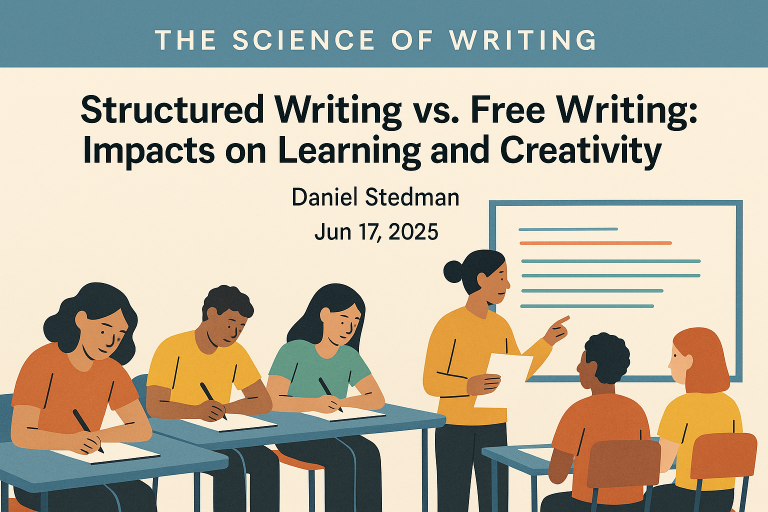Structured Writing Instruction in the Age of AI
The rise of AI tools like ChatGPT has sparked new questions about how we teach writing. When a student can generate a passable essay in seconds, it might seem like writing assignments are in jeopardy. This challenge reveals an opportunity: structured writing instruction is more essential than ever. In an AI-enabled classroom, teaching students how to write—through clear structure, practice, and feedback—ensures they develop critical thinking and a genuine voice instead of relying on machines. In fact, with the right approach, AI can become a helpful ally rather than a shortcut. This post will explore why writing needs to be taught across all subjects, how to support multilingual learners, and practical strategies for teachers to adapt. The goal is an inviting, practical look at how we can help students become confident writers in a world with generative AI.
If we can offload more and more tasks to generative A.I., what’s left for the human mind to do? – Ezra Klein
Writing Across the Curriculum: Everyone’s Job
Writing isn’t only for English class – it belongs in every subject! Whether it’s explaining a science experiment, analyzing a historical event, or solving a math word problem, writing helps students deepen their understanding. Educators have long noted that writing is a mode of learning; when students write about what they’re studying, they’re actively processing and retaining the material in a deeper way [1]. For example, asking a history student to write a short journal entry from the perspective of a historical figure can cement their grasp of the facts and significance. In science, writing a lab reflection or a hypothesis encourages precision in thinking.

Writing Across the Curriculum is about making writing a routine part of learning in all disciplines. This approach benefits students in multiple ways. First, it reinforces content knowledge—writing about a topic forces students to recall and organize information, which strengthens memory. (Cognitive science calls this retrieval practice, and it’s great for learning.) Second, it builds students’ communication skills. They learn to adapt their writing to different contexts: a persuasive essay in social studies, a lab report in chemistry, or a personal narrative in language arts. Each format strengthens their overall writing ability. By including writing tasks in various subjects, teachers also send a message that clear written communication is a universal skill, not just an ELA requirement.
In the age of AI, writing across the curriculum is even more crucial. If students are only asked to write in one class, they might get fewer opportunities to practice – and more temptation to offload the work to AI. But when writing is woven into daily learning across subjects, students consistently exercise their writing muscles. It becomes a normal part of thinking, not an onerous task to evade. Moreover, teachers in all subjects can design authentic writing assignments that are harder for AI to complete credibly. For instance, a biology teacher might have students write a brief analysis of their own experiment’s results – something ChatGPT wouldn’t know because it’s based on the student’s unique lab data. Such assignments encourage original thought and make misuse of AI less appealing.
There’s also a collaborative benefit. When every teacher incorporates writing, the school can develop consistent expectations and support for writing skills. A student who learns how to structure a paragraph in English class will be prompted to apply those skills in history class, too. This consistency reinforces good habits. Schools can even share a common language (thesis, evidence, conclusion, etc.) so that students hear the same terminology and advice in every classroom. In short, writing across the curriculum turns writing from a one-class challenge into a school-wide culture.

Multilingual Learners and Structured Support
In many classrooms, teachers work with multilingual learners (students for whom English is not the first language). These students face the dual challenge of mastering content and language simultaneously. Structured writing instruction is a lifesaver for them. Why? Because having clear frameworks, models, and scaffolds for writing helps multilingual learners express their ideas without being stopped in their tracks by language barriers.
One powerful strategy is using graphic organizers and sentence frames. Research shows that graphic organizers can reduce cognitive load for multilingual writers by helping them visually map out ideas and relationships instead of juggling everything in a new language in their head [2]. For example, before writing an essay, an English learner might use a graphic organizer to plan their introduction, body, and conclusion with keywords or phrases in their native language or in simple English. This planning stage lets them focus on structuring their thoughts. Sentence frames (partial sentences with blanks to fill in) can also guide students in forming correct sentences. A frame like “The experiment showed ___ because ___.” provides a starting structure so they can plug in their specific information. These tools build confidence: students see that they do have ideas worth writing, and they have a road map to communicate them.

Explicit instruction is equally important. Teachers should directly teach how to organize an essay or a paragraph, how to use transition words, and how to choose academic vocabulary. Multilingual learners, especially, benefit from clear models of each genre of writing (stories, arguments, explanations) and what kind of language each requires [2]. For instance, showing examples of a scientific explanation with phrases like “the data indicates…” or a narrative with past-tense verbs and dialogue gives these students templates to emulate. This structured approach demystifies the patterns of English writing. Rather than assuming students will “pick it up,” teachers spell it out and practice it together. All students benefit from such clarity, but it’s particularly crucial for those learning English.
Another supportive practice is to embrace students’ first languages as assets. It might sound counterintuitive in a writing class to let students use other languages, but research suggests that allowing multilingual learners to brainstorm or initially write in their strongest language can lead to more complex ideas and better overall writing in English [3]. This process, known as translanguaging, recognizes that thinking isn’t limited to one language at a time. For example, a student might outline their argument in Spanish first to get their full range of thoughts out, then translate that outline into English with the teacher’s help. By doing so, they’re not restricted by a limited English vocabulary during the idea-generation phase. Eventually, as their English grows, they’ll rely less on their first language. The key is that we encourage them to think deeply and not let limited language proficiency force shallow writing. Over time, this leads to more original and content-rich work in English [3].
Finally, structured writing instruction for multilingual learners should include lots of feedback and revision opportunities. These students may make more errors at first, so a growth-minded classroom environment is vital. Teachers can conference one-on-one, highlighting a few key areas (maybe verb tenses, or organizing ideas clearly) for the student to improve in the next draft. Celebrating what the student does well (perhaps they used a strong example or have a compelling idea) alongside corrections keeps them motivated. The structure of drafting and revising with guidance helps multilingual writers see concrete improvement and realize that writing is a process, not a one-shot test of English fluency.

Teacher Strategies for an AI-Enabled Classroom: Structure Is the Anchor
Let’s be real—some students are going to use AI in certain circumstances. Whether it’s for brainstorming, fixing grammar, or writing entire drafts, tools like ChatGPT are already in the mix. But here’s the good news: when teachers emphasize structure, students still learn how to write—even if they’re using AI along the way. In fact, structure is the anchor that keeps writing instruction grounded, no matter how advanced the tools get.
That’s where structured writing platforms like Pressto come in. These tools don’t just generate prompts—they guide students through the thinking process of writing. Instead of handing students a blank page (or a blank chatbot window), Pressto breaks writing into building blocks: planning, organizing, connecting ideas, and revising. It teaches rhetorical structure—introduction, body, conclusion; claim, evidence, reasoning; sequence, cause and effect—through interactive supports. Students still have to do the work of shaping their ideas, even if they get help along the way.
Here’s why that matters: AI can generate a paragraph, but it can’t teach a student why that paragraph works. It won’t tell them if the reasoning is sound, or if the argument flows logically. But if a student is working within a structured writing environment, they’re learning the underlying architecture of writing as they go. They see how a transition connects two ideas. They understand what makes a strong conclusion. Even if they use AI to get a nudge—or to help fill in a section—they’re still practicing the moves that make writing meaningful.
This shifts the teacher’s role in a powerful way. Instead of policing AI use, teachers can focus on guiding students through the process of writing. Structured tools make it easy to see who’s planning, who’s organizing, who’s revising. You can step in when a student’s structure breaks down, rather than just reacting to the final product. And students start to internalize the idea that good writing has shape, logic, and flow—skills they’ll need whether they’re writing an essay, drafting an email, or using AI in the workplace someday.
Bottom line: If you build structure into your writing instruction—through graphic organizers, modeling, or platforms like Pressto—you’re teaching students how to think like writers, even in an AI-enabled world. You’re not fighting the future. You’re preparing students to write within it—with purpose, clarity, and confidence.
Conclusion: Reimagining Writing Instruction With AI
Nearly three-quarters of students in the U.S. already struggle to meet grade-level writing standards [1]. The emergence of AI could either exacerbate this problem or help solve it – and the outcome depends on how we respond as educators. The solution is not to abandon writing or throw up our hands at ChatGPT’s prowess. Instead, it’s to recommit to structured writing instruction. That means teaching writing explicitly and thoughtfully: across the curriculum, with support for diverse learners, and with modern tools that enhance (rather than replace) the student’s own efforts.
In an AI-enabled classroom, structured writing instruction ensures that students are still the ones doing the important cognitive work. They brainstorm ideas, organize their thoughts, choose words, and ultimately produce writing that reflects their mind at work. AI can assist by handling routine tasks and providing instantaneous feedback, but it cannot replicate a student’s unique voice or original thinking. By focusing on structure and process, we empower students to use AI in a productive way – as a helpful assistant or coach – while they remain the authentic authors of their work.
Platforms like Pressto offer a glimpse of how we can marry technology with pedagogy. Teachers get support through automatically generated prompts and real-time student feedback, and students get a scaffolded environment that makes writing less intimidating and more engaging. It’s a win-win if implemented well. The technology is there to support the science of writing instruction, not to supplant it.
For busy K–12 educators, the prospect of overhauling writing instruction might feel daunting, especially with so many demands on your time. But incorporating these ideas can be done gradually. Try adding one writing exercise to a non-ELA class next week. Introduce a simple graphic organizer for your next writing assignment. Have a quick chat with your class about ChatGPT and honesty. Small steps can foster big changes in how students perceive writing.
The age of AI is here to stay, but so is the need for genuine human writers. By making our writing instruction more structured, supportive, and savvy to new tools, we can help students find their own voices amidst the noise. In fact, we might just ignite a passion for writing that no machine can match. After all, the ultimate aim is not just to produce competent essays for school – it’s to nurture thinkers and communicators who can navigate a complex world with clarity and confidence. Structured writing instruction, paired with thoughtful use of AI, can ensure our students grow into the articulate, creative, and ethical writers we need in the future.
References:
- National Center for Education Statistics (2012). The Nation’s Report Card: Writing 2011. (Only about 24% of 8th and 12th graders performed at the Proficient level in writing, meaning roughly three-quarters fell below proficiency.)
- Squire, A., & Clark, S. K. (2020). “Exploring how fourth-grade emerging bilinguals learn to write opinion essays.” Literacy Research and Instruction, 59(1), 53–77. (Demonstrates the benefits of graphic organizers, modeling, and explicit writing instruction for multilingual learners.)
- García, O., & Velasco, P. (2014). “Translanguaging and the writing of bilingual learners.” Bilingual Research Journal, 37(1), 6–23. (Findings show that allowing students to use their first language in the writing process can enhance idea development and overall writing quality in the second language.)
- Sorte, S. (2024). “When should ChatGPT be taught in K–12? Let’s get into it.” EduLab Capital (Medium), Feb 14, 2024. (Quotes ed-tech CEO Brad Schiller on the concern that 86% of K–12 students are at a basic writing level, underscoring the need for strong foundational writing instruction before heavy AI use.)
- Morrone, M. (2023). “This generative AI tool actually teaches kids how to write.” Fast Company, March 26, 2023. (Describes how experienced educator Esther Wojcicki sees AI as a way to engage students in writing, and details features of the Pressto platform – such as AI-generated prompts and an AI Writing Buddy – that help students structure their writing without doing the work for them.)

